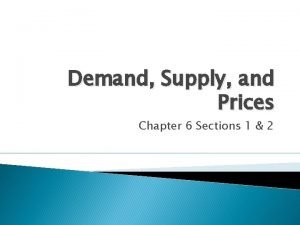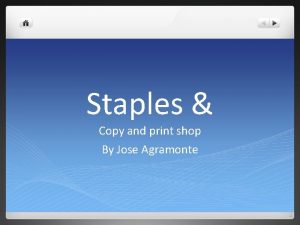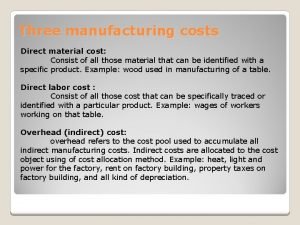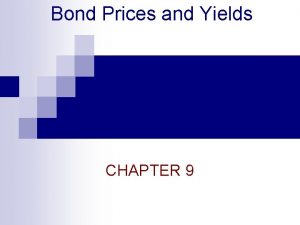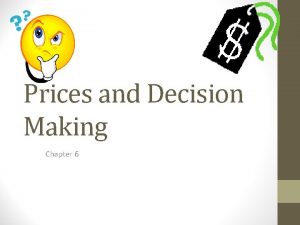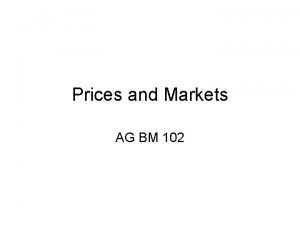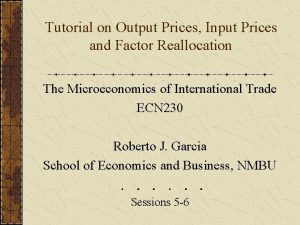PRODUCT COSTS AND PRICES WHAT ARE PRODUCT COSTS







- Slides: 7

PRODUCT COSTS AND PRICES

WHAT ARE PRODUCT COSTS? • Product costs are costs that are incurred to create a product that is intended for sale to customers. • Product costs include direct material (DM), direct labor (DL) and manufacturing overhead (MOH).

UNDERSTANDING THE COSTS IN PRODUCT COSTS • Recall that product costs include direct material, direct labor, and manufacturing overhead. The three are detailed below: • 1. Direct material • Direct material costs are raw materials purchased that go directly into producing the products. For example, if Company A is a chair manufacturer, an example of a direct material cost would be the wood used to make the chairs. • 2. Direct labor • Direct labor costs are the wages, benefits, and insurance that are paid to employees who are directly involved in manufacturing and producing the goods. For example, workers on the assembly line or those who use the machinery to make the products.

UNDERSTANDING THE COSTS IN PRODUCT COSTS • 3. Manufacturing overhead • Manufacturing overhead costs are indirect factory-related costs that are incurred when producing a product. Manufacturing overhead costs include: • Indirect material: Indirect materials are materials used in the production process but are not directly traceable to the product. For example, glue, oil, tape, cleaning supplies, etc. are classified as indirect materials because it would not be possible (or not costeffective) to determine the exact cost of the materials that go into the production of a product. • Indirect labor: Indirect labor is the labor of those who are not directly involved in the production of the products. • An example would be security guards, supervisors, and quality assurance workers in the factory. Their wages and benefits would be classified as indirect labor costs. • Other costs such as factory utilities, lease, and insurance.

EXAMPLE OF PRODUCT COSTS • Company A is a manufacturer of tables. Its product costs can include: • Direct material: The cost of wood used to create the tables. • Direct labor: The cost of wages and benefits for the carpenters to create the tables. • Manufacturing overhead (indirect material): The cost of nails used to hold the tables together. • Manufacturing overhead (indirect labor): The cost of wages and benefits for the security guards to overlook the manufacturing facility • Manufacturing overhead (other): The cost of factory rent and cost of factory utilities.

EXAMPLE • For example, Company A produced 1, 000 tables. • To produce 1, 000 tables, the company incurred costs of: • $12, 000 on wood • $2, 000 on wages for the carpenters and $500 on wages for the security guards to overlook the manufacturing facility • $100 for a bag of nails to hold the tables together • $500 for factory rent and utilities • Total product costs: $12, 000 (direct material) + $2, 000 (direct labor) + $100 (indirect material) + $500 (indirect labor) + $500 (other costs) = $15, 100 total product cost.

EXAMPLE • Therefore, Company A incurred total product costs of: • $15, 100 to produce 1, 000 tables, or • a unit product cost of $15, 100 / 1, 000 = $15. 10.



